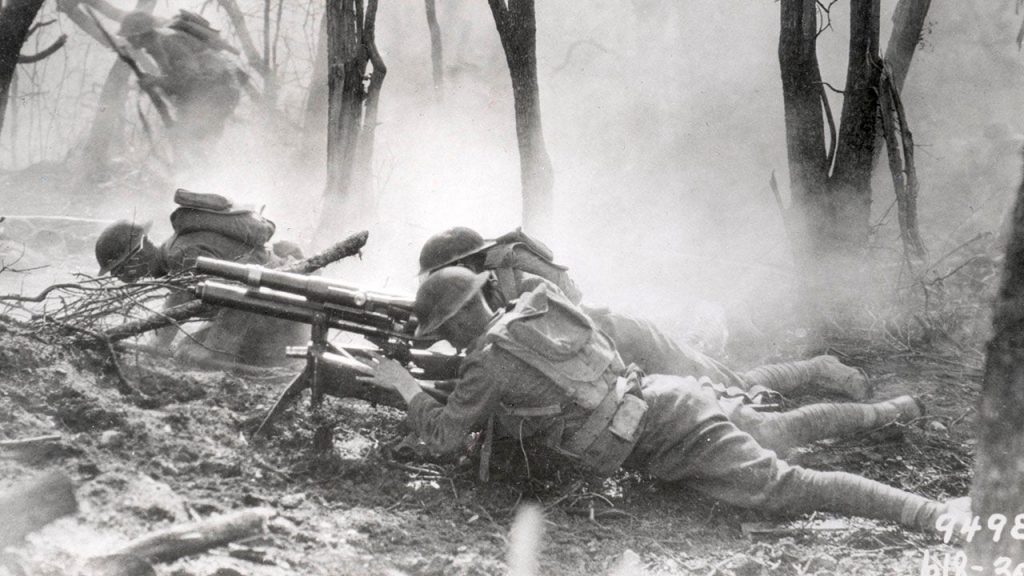On April 6, 1917, the United States officially entered World War I after a declaration of war was passed by Congress following President Woodrow Wilson’s request. Wilson’s decision came after Germany engaged in unrestricted submarine warfare and attempted to form an alliance with Mexico that threatened American territory. The U.S. had initially resisted entering the war despite provocations such as the sinking of the British cruise ship Lusitania, but finally took action following the Zimmerman Telegram and Germany’s renege on promises to halt submarine attacks.
The American people responded to the call for war with a surge of patriotic commitment, showing support for the cause through songs like George Cohan’s “Over There” and the playing of “The Star-Spangled Banner” at military events. The American Expeditionary Force, led by Gen. John Pershing, arrived in France in June 1917, offering hope to Allies who had been entrenched in brutal combat for years. The AEF participated in various offensives, including the Meuse-Argonne Offensive, which successfully broke the stalemate on the Western Front and ultimately led to the end of the war.
During the war, over 116,000 American soldiers were killed, with an additional 204,000 wounded in action. The Meuse-Argonne Offensive, in particular, was a significant operation for the AEF, capturing 200 square miles of German-held territory and marking a crucial turning point in the conflict. The sacrifices made by American soldiers in World War I laid the foundation for valuable strategic lessons and the development of a skilled officer corps that would play a key role in future conflicts.
Many celebrated American military leaders, such as George C. Marshall, Douglas MacArthur, and George S. Patton, fought in World War I and later led the Allied efforts in World War II. Dwight Eisenhower, who served stateside in World War I, went on to become the Supreme Allied Commander in Europe during World War II. By the time the Armistice was signed on November 11, 1918, the American Expeditionary Forces had become a respected and battle-tested army that played a crucial role in the outcome of the war.
Today, over 14,000 U.S. soldiers are buried in the Meuse-Argonne American Cemetery in France, serving as a reminder of the sacrifices made during World War I. The conflict not only shaped the future of American military strategy but also highlighted the importance of international alliances and the impact of global conflicts on the nation. The legacy of World War I lives on through the stories of those who served and the lessons learned that continue to influence U.S. military operations to this day.


